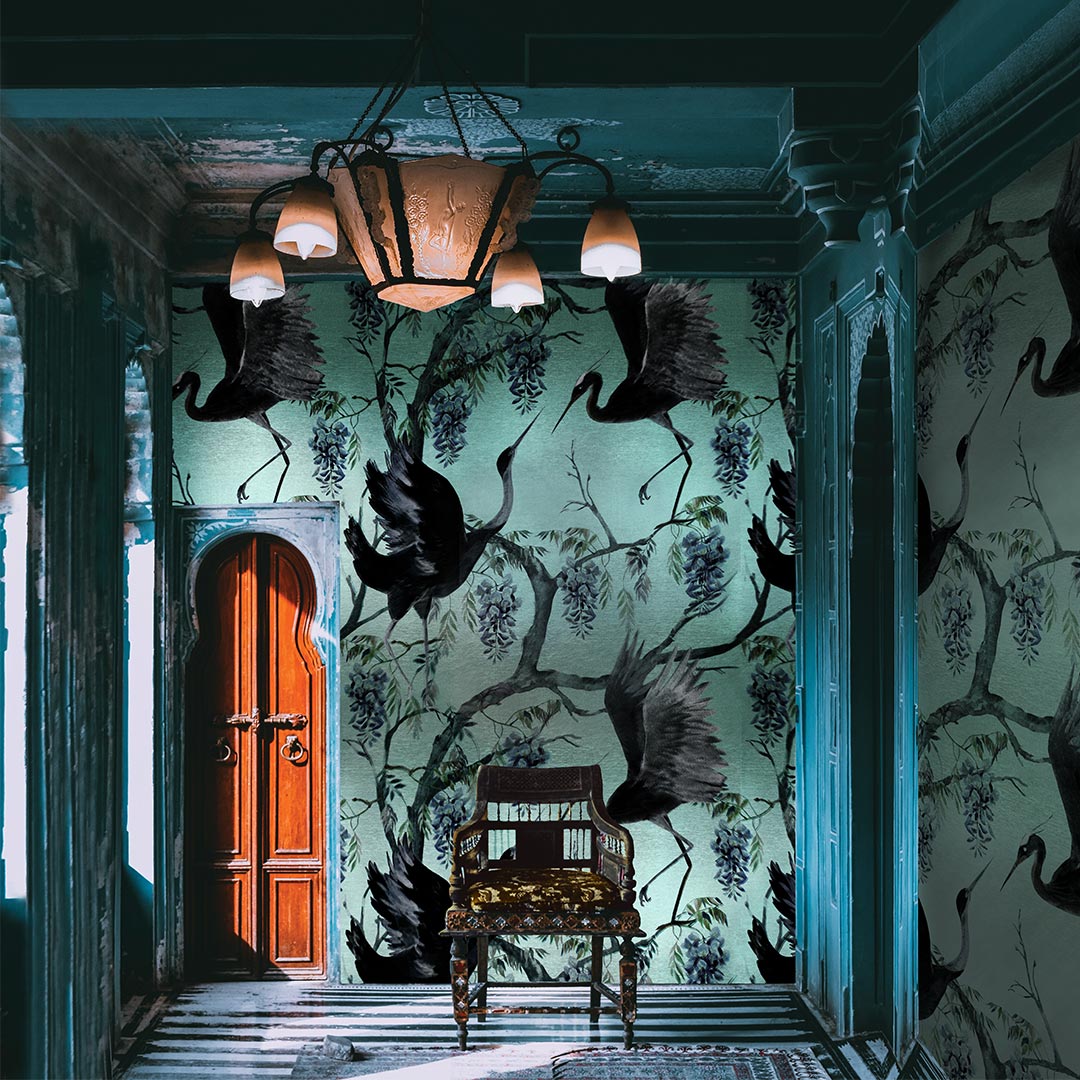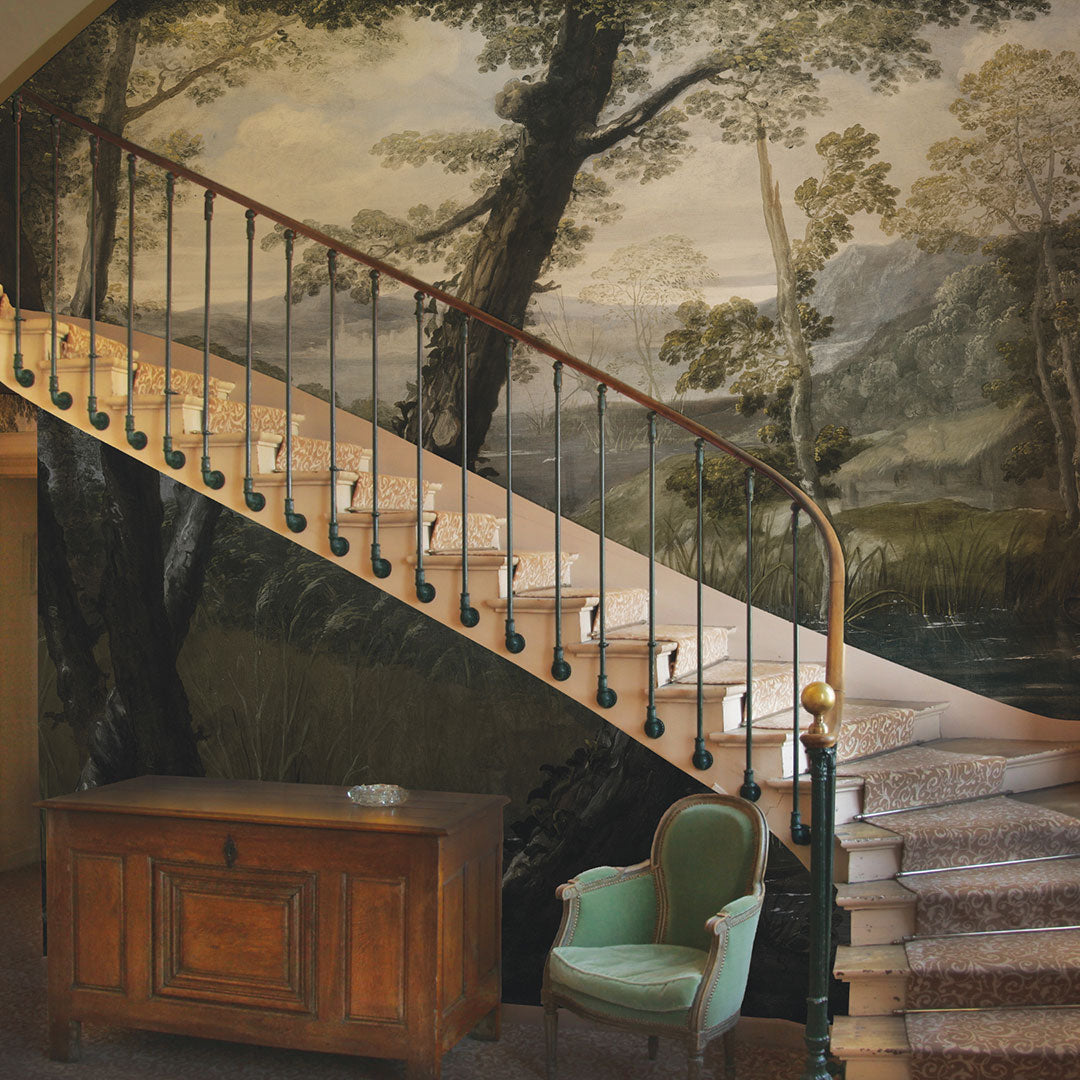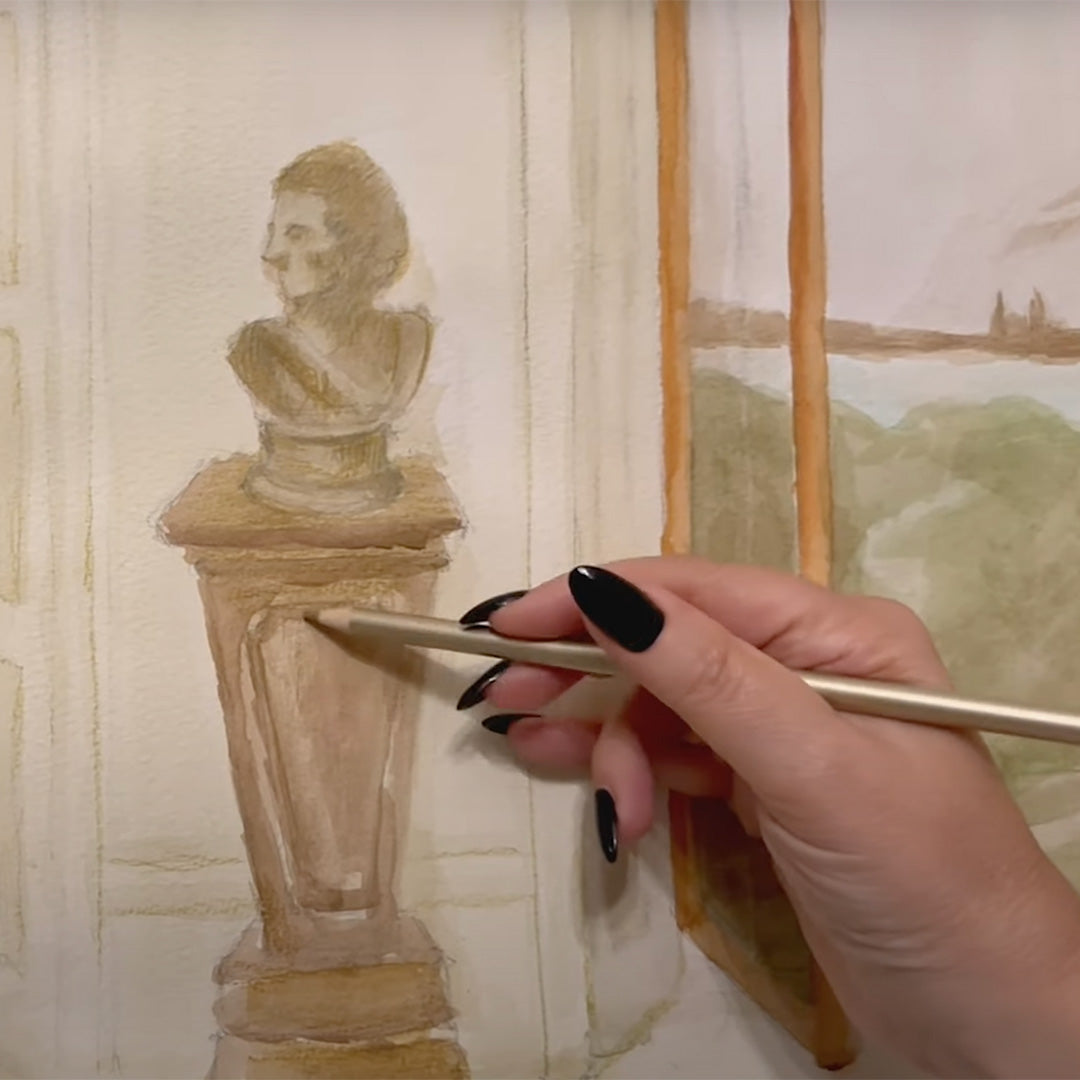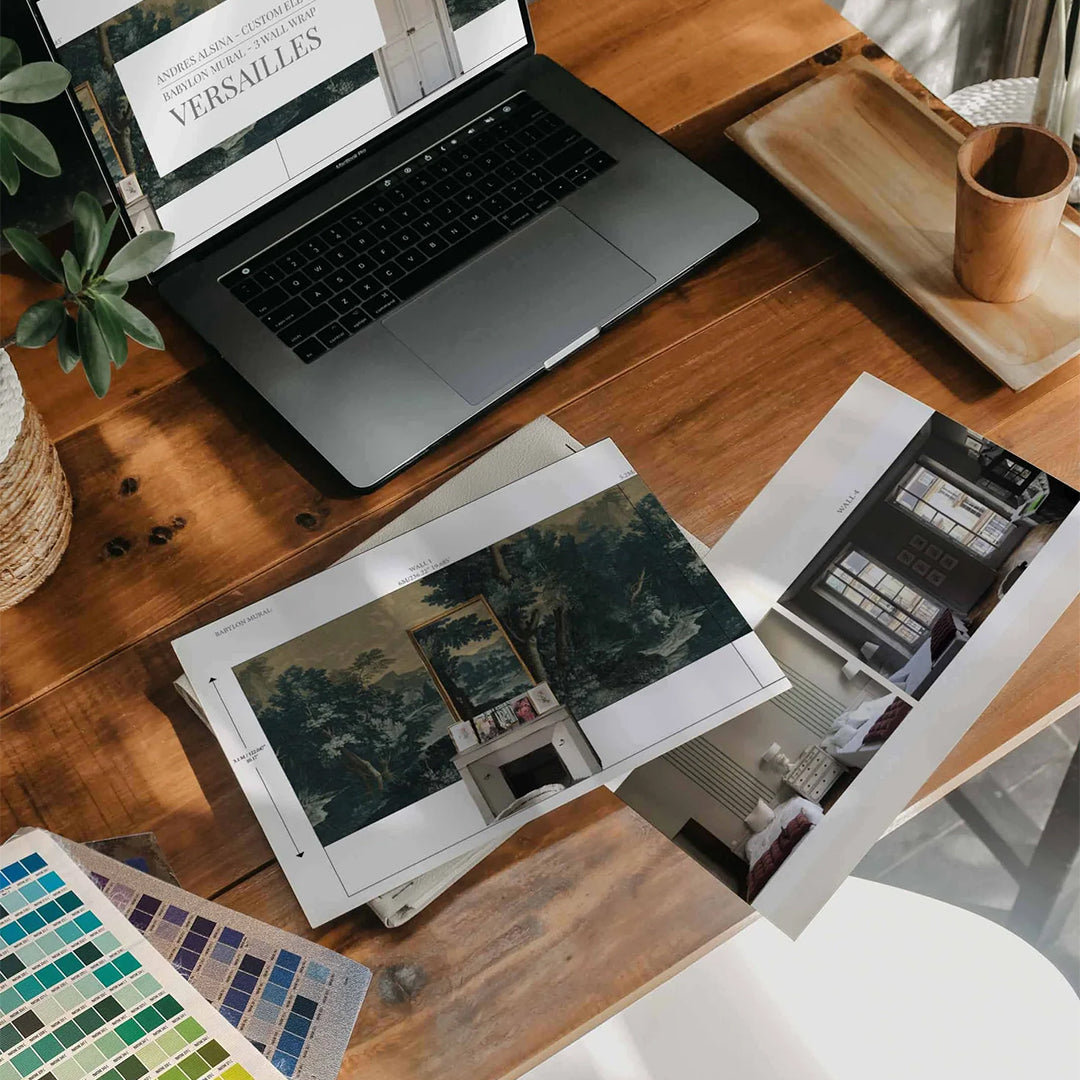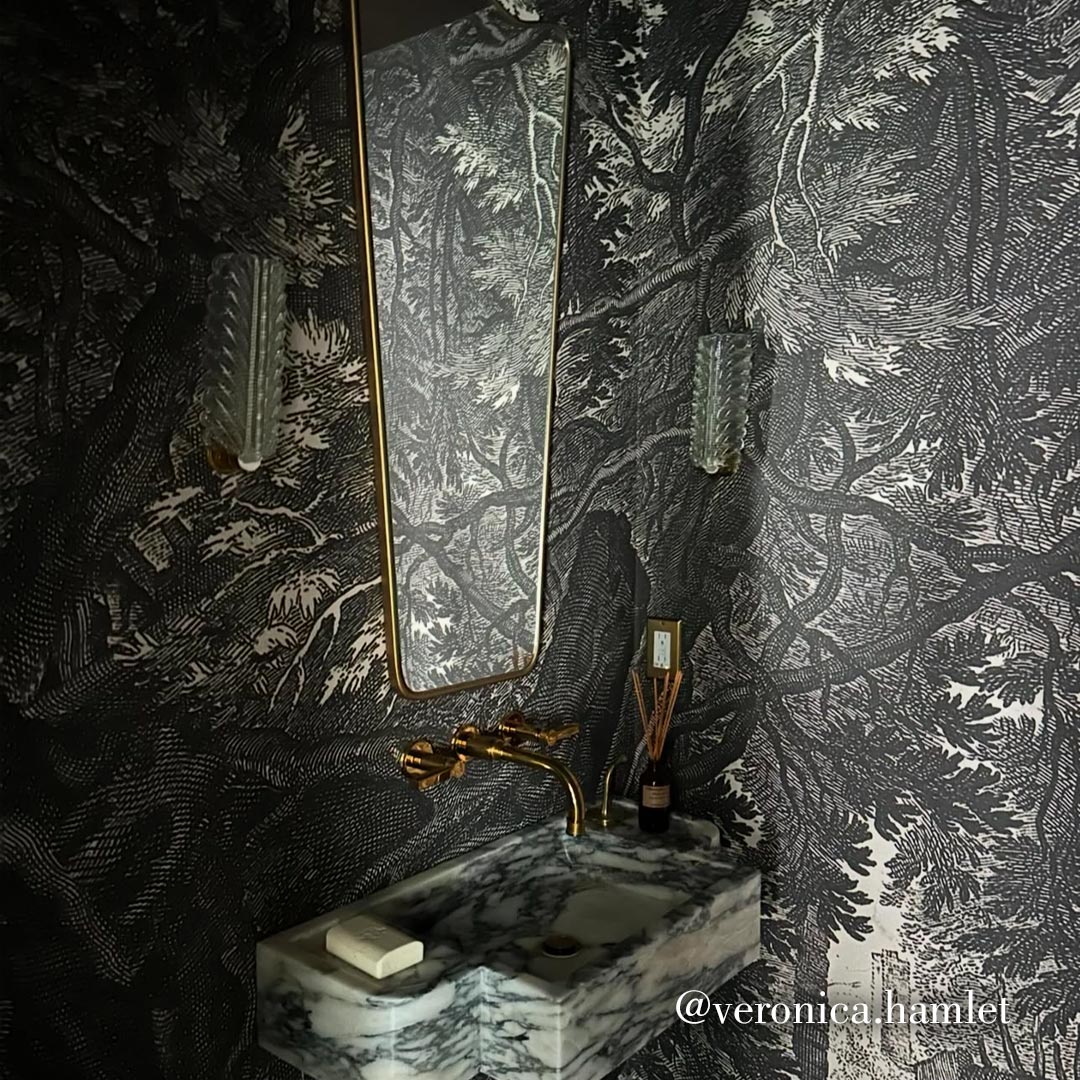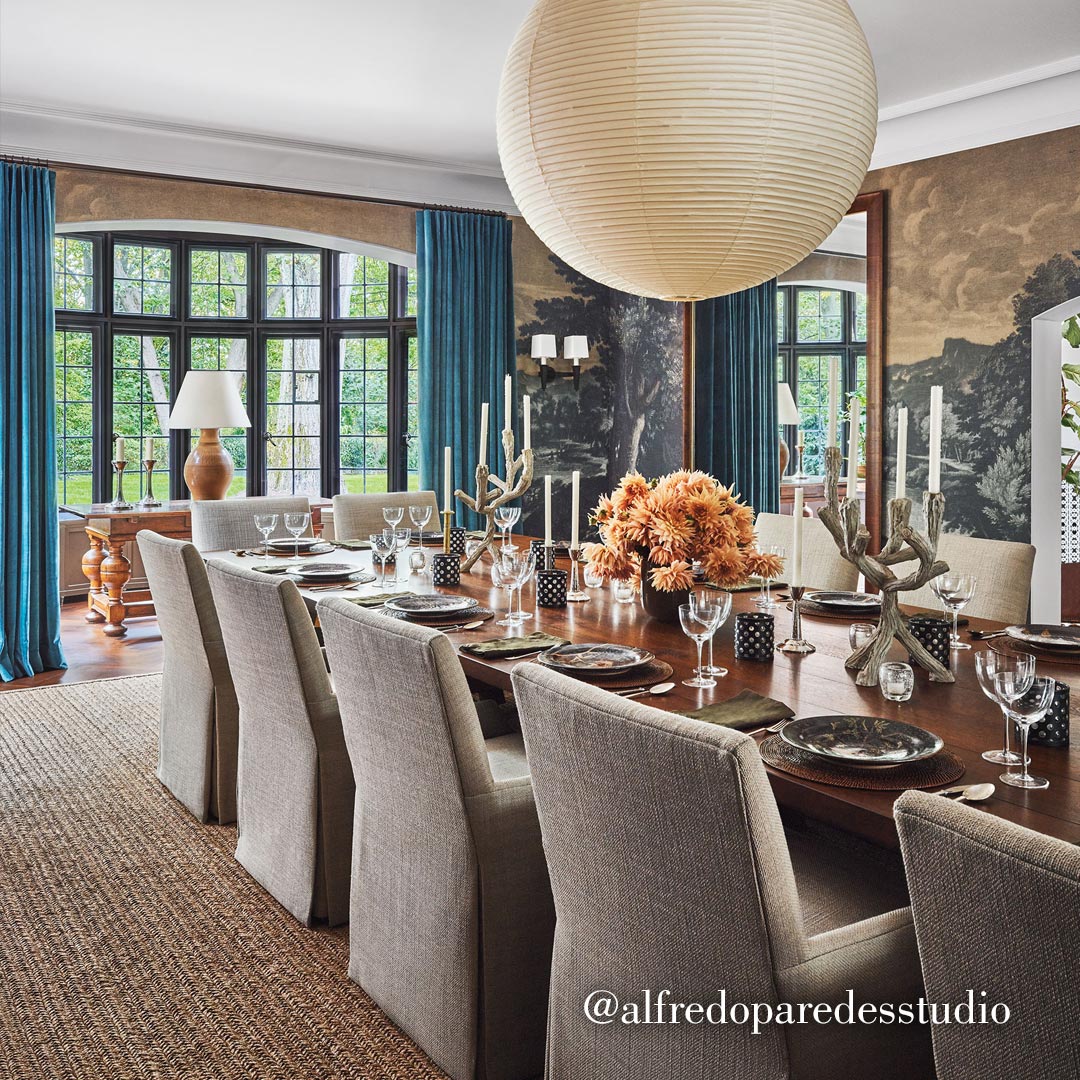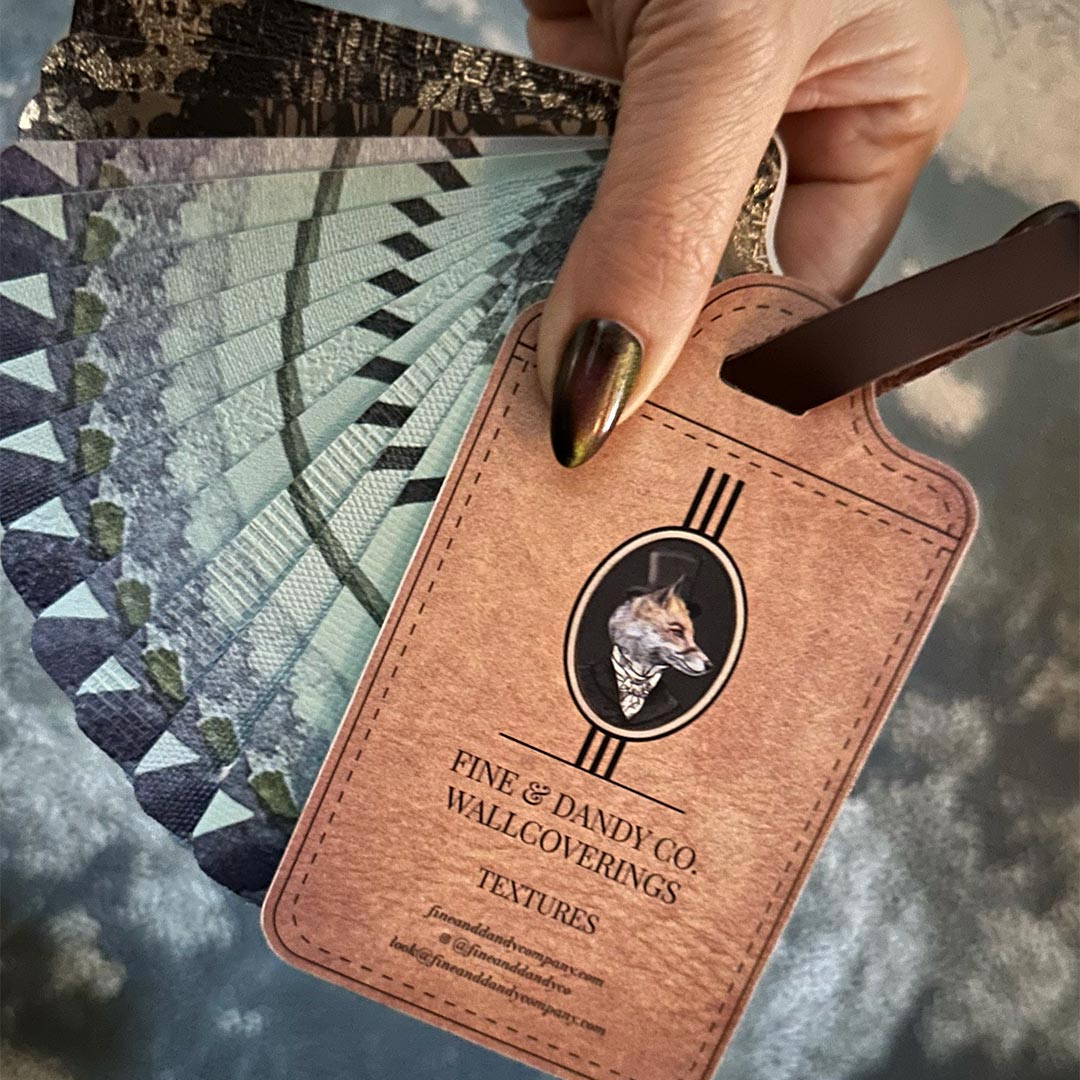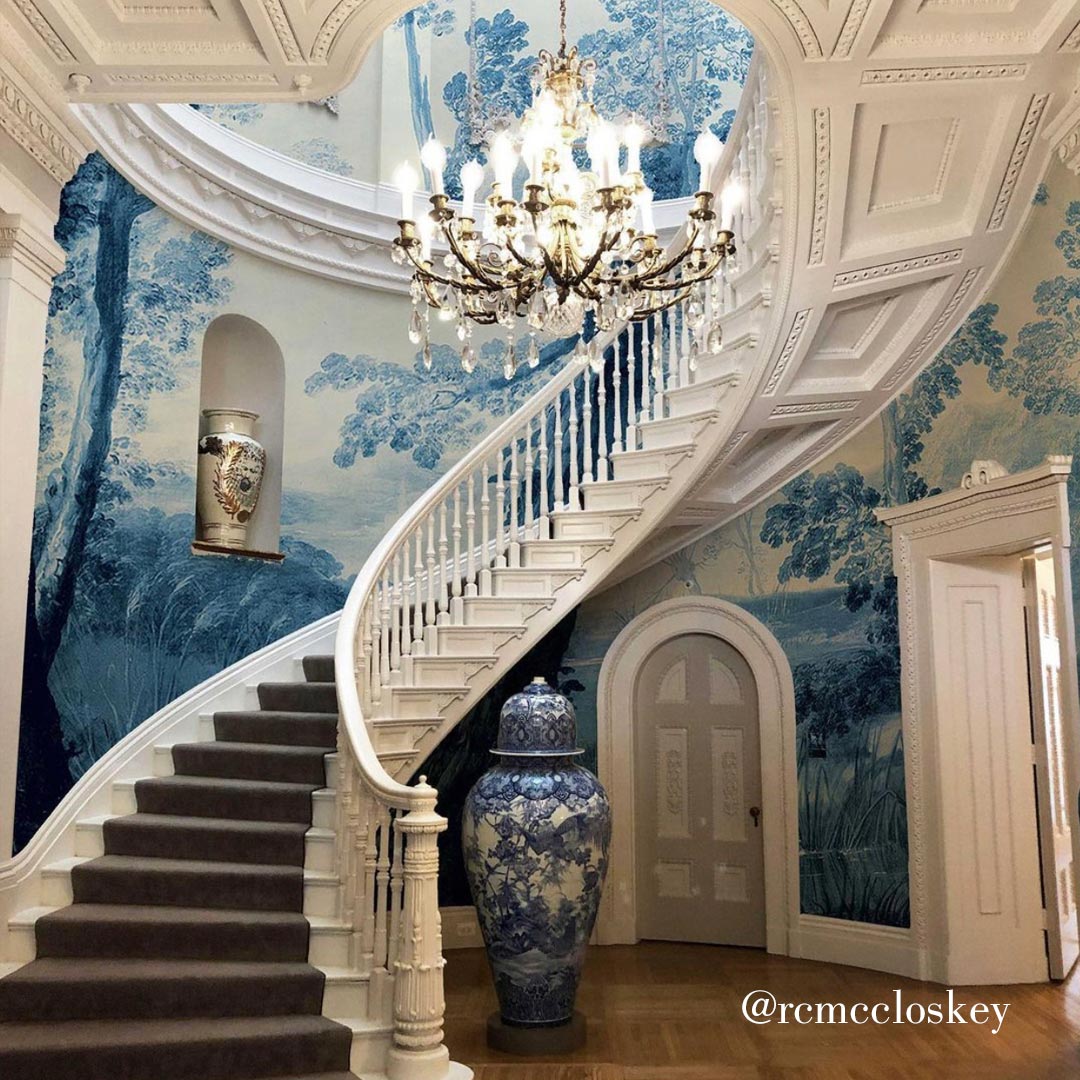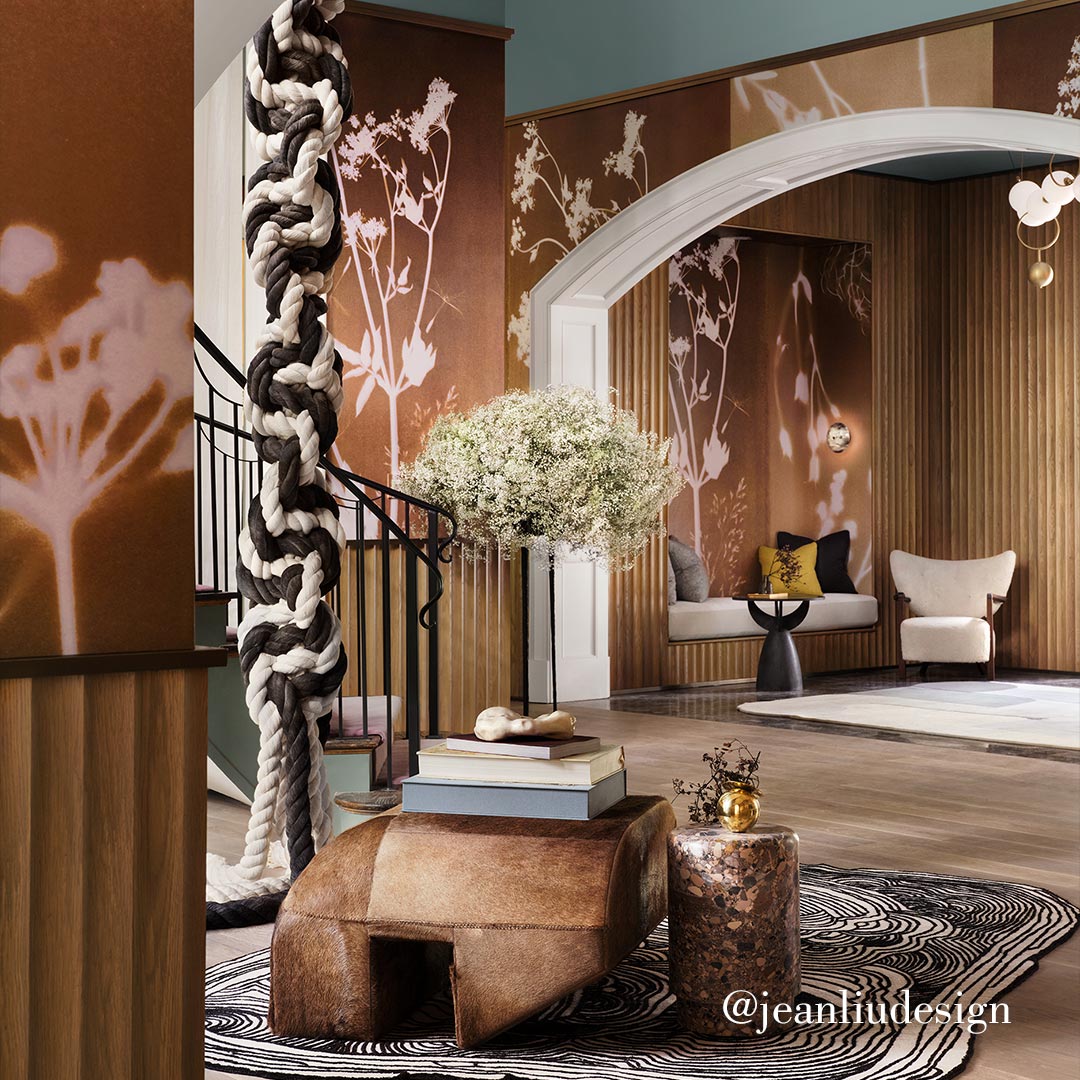BORDER INSTALLATION GUIDE
Please click here for PDF.
BORDERS INSTALLATION INSTRUCTIONS
IMPORTANT: PLEASE READ BEFORE INSTALLING
ONCE YOUR INSTALLATION IS COMPLETE, PLEASE SEND IT TO US DEARS; WE’LL TAG YOU AND SHARE IT FOR OTHER DANDIES TO ENJOY!
WHAT YOU WILL NEED TO INSTALL BORDERS:
1. Measuring Tape
2. Level
3. Pasting Brush
4. Heavy duty clear wallpaper paste 5. Lead pencil & eraser
6. Smoothing Tool/Squeegee 7. Clean sponge and water 8. Sharp/fresh cutting blade 9. Clean, dry cloth
Note: A clean, stable, flat surface will be needed to apply the paste. SPECIAL INSTRUCTIONS FOR METALLLIC BORDER INSTALLATION:
THIS BORDER CONTAINS METALLIC PARTICLES AND CAN CONDUCT ELECTRICITY. TO AVOID POSSIBLE
FIRE HAZARDS OR ELECTRIC SHOCK, BORDERS SHOULD NOT COME IN CONTACT WITH OR EXTEND INTO ELECTRICAL-OUTLET BOXES OR LIGHT-SWITCH BOXES. TURN OFF ALL ELECTRICITY TO THE ROOM PRIOR TO STARTING INSTALLATION.
1.INSPECT YOUR BORDER(S):
Please inspect ALL border(s) before installation.If any defect is evident at this time (or any point of the installation) no further material should be applied and Fine & Dandy Co. should be contacted IMMEDIATELY. FINE & DANDY CO. WILL NOT BE LIABLE FOR CHARGES OVER 15 FEET OF MATERIAL. (1 ROLL)
2.PREPARING YOUR WALLS:
A successful installation or removal of your borders, depends on how well your walls are prepared.
SMOOTH:
Any imperfections, cracks or holes should be filled using spackle. Once dry, sand with a medium grit sandpaper until youachieve a smooth surface.
CLEAN:
Remove any grease, dirt, stains or mildew from the wall surface.
3.PRIME:
We recommend priming the walls with a high quality primer-sealer before installing a wallcovering for optimal results.
Proper priming will also allow for easy removal later on.
1. If you are not bordering against a moulding or the ceiling use a level to draw guidelines
2. Paste the back of the border using a pasting brush
3. Slowly lift the border, ensuring that the paste surface is covered, and “Book” by carefully folding the border paste side to paste side, accordion style. CAUTION: DO NOT CREASE MATERIAL
4. Apply “Booked” border to the wall by unfolding each section as you go. Gently smooth into place using a smoothing tool or squeegee, removing all air pockets.
5. Wash with a sponge to remove excess paste.
6.AVOID BURNISHING THE FACE OF THE MATERIAL. METALLIC WALLCOVERINGS SHOULD BE INSTALLED ONLY WITH A FELT LINED SQUEEGEE.
Tips:
1. If a 15 foot strip is too long to work with, cut it into shorter sections and match the pattern on the wall.
2. To join sections in the middle of a wall, overlap two sections until the pattern matches. Double-cut a seam by cutting through both layers with a sharp razor knife. Pull back the top layer and remove both of the cut ends.
Smooth the border flat.
3. Having assistance during installation will be beneficial for those who have not installed wallcoverings before, however it’snot essential.
4. Use a sharp, fresh razor blade for all cuts to avoid fraying.
Installing around Doors and Windows:
1. Mitre-cut a right angle corner (45 degrees) overlap the two pieces and make a diagonal razor cut from inside corner to outside corner. Remove excess material from over and under the mitre.
2. Finish corner.
Installing over Vinyl Wallcovering:
1. Apply vinyl to vinyl adhesive to wallcovering. PLEASE DO NOT WET THE BORDER.
2. Apply the border and smooth as you would wallcovering.
Tips:
1. If a 15 foot strip is too long to work with, cut it into shorter sections and match the pattern on the wall.
2. To join sections in the middle of a wall, overlap two sections until the pattern matches. Double-cut a seam by cutting through both layers with a sharp razor knife. Pull back the top layer and remove both of the cut ends.
Smooth the border flat.
CARE AND MAINTENANCE OF WALLCOVERING
I. General Conditions Day-to-Day Soil
In order to comply with NSF-342 Sustainable Wallcovering Standard – Product may be cleaned with IMUS GTC DIN-14 Heavy Duty Degreaser and Cleaner. Follow instructions for dilution – 16:1. Test a small section first to ensure efficacy. Otherwise, ordinary dirt and smudges can be removed with a mild soap and warm water. Clean from bottom of wall up- ward. Rinse thoroughly with clean water from the top down using a sponge. Deeply embossed wallcoverings need extra attention in case suds or loosened dirt lodge in depressed surfaces. Dry wallcovering with a soft lint free cloth or towel. For more difficult stains that are only surface deep, the use of a stronger detergent is recommended: however, the manufacturer’s instructions should be followed carefully.
Not recommended for cleaning are steel wool or powdered abrasive because they mark the surface leaving an unsightly appearance. DO NOT use active solvent type cleaning preparations, such as nail polish remover, etc...because they remove print, and/or finish from the wallcovering.
Care should be taken that water dripping down the wall does not run behind the floor molding. The molding can be dis- colored and/or permanently damaged. All stains should be attempted to be removed with soap and water first. Iso-Propel alcohol may set some stains that soap and water may remove.
II. Special Conditions
A. Lacquer, Shellac- Remove IMMEDIATELY with dry cloth, taking care not to spread stain. Clean quickly with rubbing alco- hol. Rinse with clear water.
B. Ballpoint Ink- Remove IMMEDIATELY using a cloth dampened in rubbing alcohol.
C. Tar or Asphalt- remove IMMEDIATELY using a cloth dampened with kerosene or cleaning v. Rub gently from the outside edge of the stain to the center to prevent the stain from spreading. Rinse with clear water.
D. Chewing Gum, Grease- Scrape off as much as possible and go over lightly with cleaning naphtha to remove remainder. (Chewing gum will come off more easily if rubbed with an ice cube.) No time should be lost in removing shoe polish be- cause it contains dye, which can cause permanent staining. Rinse with clear water.
E. Blood, Urine, Feces-remove quickly using a strong soap solution.
F. Pencil, Crayon- Scrape off excess crayon and erase pencil marks. Clean remaining stains with rubbing alcohol.
NOTE: When using rubbing alcohol, hydrogen peroxide, turpentine, household bleach, naphtha or kerosene, first test the solution on some inconspicuous portion of the vinyl to be sure that there will not be any adverse effect on print, color orgloss. When drying always use a blotting action rather than a rubbing motion.
NEVER MIX CLEANING AGENTS TOGETHER VIOLENT REACTIONS MAY OCCUR.
III. Patching and Repairing Vinyl Borders:
REMOVING BORDERS:
1. Removal of entire strip: The full-length strip normally can be peeled off the wall by
starting at the one edge of the border and pulling down but horizontally off the wall - not away
from the wall. If the strip is removed in 1-foot sections using the same technique then the damage is minimized to the wallboard surface. Once removed, it can be replaced with a new strip.
2. Removal of a small section (Inlay Method): Cut around the damaged section of the viny
over the cutout area so the wallcovering and remove it. A larger patch is then cut from the new material and pasted pattern matches. The overlap is cut with a new single edged razor blade through the wall, the excess material is then removed and the edges of the patch pressed into place. Care should be taken not to score the base wall surface when applied to drywall construction.
Questions?
contactus@fineanddandycompany.com
fineanddandycompany.com
@fineanddandyco

